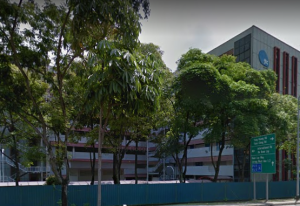Second consecutive quarter of modest industrial rental correction a firmer sign of industrial property market nearing bottom said a report by Jones Lang LaSalle Property Consultants (JLL). The report suggested that the uplift in trade and economic activity that started since end-2016 is finally translating into improved industrial occupier sentiment, paving the way for the potential bottoming of industrial property market in 2018.

JLL said that its observation takes cue from JTC’s industrial property market statistics released on 26 April. JTC’s statistics showed the all-industrial property rental index posted a second consecutive quarter of modest 0.1% q-o-q decline, while prices recorded a similarly mild 0.1% q-o-q correction in 1Q18. These had come on the back of a second consecutive quarterly decline in the islandwide vacancy rate to 11.0% as of 1Q18.
“We have observed a pick-up in leasing enquiries from industrialists reviewing their real estate options in 1Q18,” said Tay Huey Ying, JLL’s Head of Research and Consultancy.
She added: “This stems from improved business sentiment amid the sustained steady economic, manufacturing and trade activities.”
The report noted that perception that rents for industrial property market were bottoming has prompted some occupiers to act fast to secure their premises ahead of rental recovery.
Table of Contents
Some have entered into forward lease renewals in anticipation of future rental increases. Business park segment remained the star performer, standing out as the only industrial asset class to record rent growth for the fourth consecutive quarter.
“As of 1Q18, business park rents have recovered by 6.9% in the last one year. This was underpinned by steady demand amid the growth of the digital economy, lack of new supply as well as the filtered-through effect from the rise in office rents,” Ms Tay said.
She added: “Demand continued to stem from qualifying users from the science, technology and media industries during the quarter.”
The report cited some examples of the star performers from the industrial property market:
“We understand a technology firm took up more than 50,000 sq ft at a city fringe location in 1Q18 while another technology/e-commerce company is sourcing for additional business park space (also in excess of 50,000 sq ft) due to expansion needs.”
The consultant suggested that the industrial property market will bottom by the end of 2018.
Their optimism stems from taking into account tapering pipeline supply that will allow demand to play catch up amid the positive economic outlook, barring any unforeseen external shocks.
JTC’s data showed that another 1.4 million sqm gross floor area of new industrial space is expected to come on-stream for the rest of 2018. This works out to about 1.1 to 1.3 million sqm of estimated net floor area (assuming 80% to 90% efficiency), significantly lower than 2017’s net new supply of 1.9 million sqm.
The business park segment is expected to continue to outperform the general market given steady demand, while logistics/warehouse rents could potentially see some upside by year-end on the back of an expected reduction in vacant stock.
Investments in industrial property market rose in popularity following the cooling measures imposed on the residential segment in 2011 and 2013. Unlike residential property, industrial property is typically not an option considered by most Singaporeans unlessthey are an investor or business owner.
The pool of local buyers for the industrial property market therefore is much smaller. Furthermore, buying an industrial property is more complex and varied. It is also less speculative compared with residential property segment.
An important differentiation is that additional buyer’s stamp duty (ABSD) is not applicable for buyers of industrial property. This is a major reason for swaying potential buyers towards industrial properties.
Another key difference in buying from the industrial property market is that buyers are not able to use their savings in their Central provident Fund (CPF) to fund their purchase unlike for a residential property probably as unlike homes, these purchases are deemed non-essentials. This essentially means buyers should have enough cash to pay the down payment.
When buying an industrial property, it is important to look out for the condition of the amenities and facilities such as lift, toilets, maintenance of air conditioning, security, lighting, fire safety as you (or your tenant, or customer, or staff) will probably have to bear with the overall condition of such facilities. This is unlike residential properties where buyers only have to take into consideration their personal preferences and the fact that buyers will have some of these basic amenities in their homes.
Industrial properties in Singapore are typically leasehold, with the most common being 60-year ones. But there are industrial properties with 30-, 99-, or 999-year leases. Freehold industrial properties command a premium and are mostly situated in suburban areas.
The maximum loan tenure for purchases in industrial property market will depend on the remaining lease of the property. This typically stands at 30 years and generally they would be lower if the lease of the property becomes less.
The loan to value (LTV) is typically up to 80% for industrial property loan. Generally, banks offer a lower LTV for industrial property and are more stringent.
Total debt servicing ratio (TDSR) is another dampener for those who want to purchase a property from the industrila segment. TDSR applies when the buyer purchases an industrial property under company name, in that it applies on the individual director’s income if the company is an investment holding company or an operating company that is loss-making or does not have sufficient cash flow to servicing the repayment.
To buy an industrial property under company name where the company is well established with an existing operating business with strong financials, TDSR may be waived on the individual. However the director is usually required to become personal guarantors of the loan the company undertakes. Hence this may affect the director’s other purchases (e.g. residential property purchases due to the loading from the TDSR for guaranteeing a loan).
Some banks sometimes advertise 100 to 120% loans, but this is due to a combination of working capital as well as industrial property loans. This however applies only to companies with strong cash flow position.
The types of loans for industrial properties are different from residential properties as the banks’ considerations are more complex and varied. This is one major reason why anyone considering the purchase of real estate from the industrial property market should engage a mortgage consultant.
—
If you are searching for an industrial property, our Panel of Property agents and the mortgage consultants at icompareloan.com can help you with affordability assessment and a promotional loans. Just email our chief mortgage consultant, Paul Ho, with your name, email and phone number at paul@icompareloan.com.






